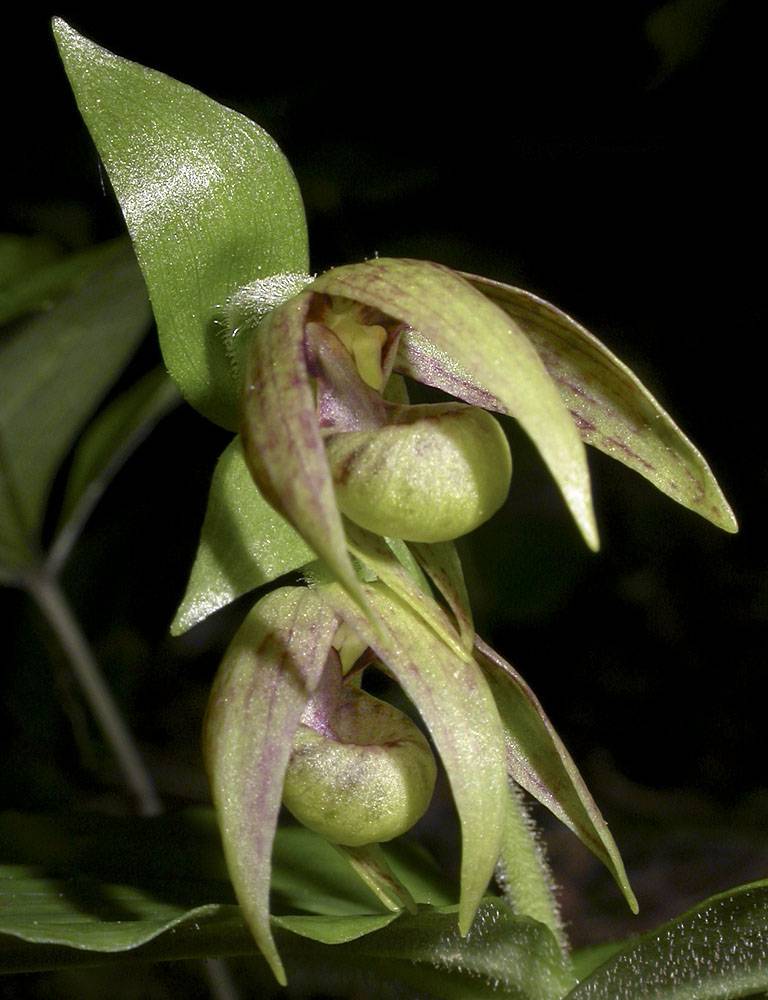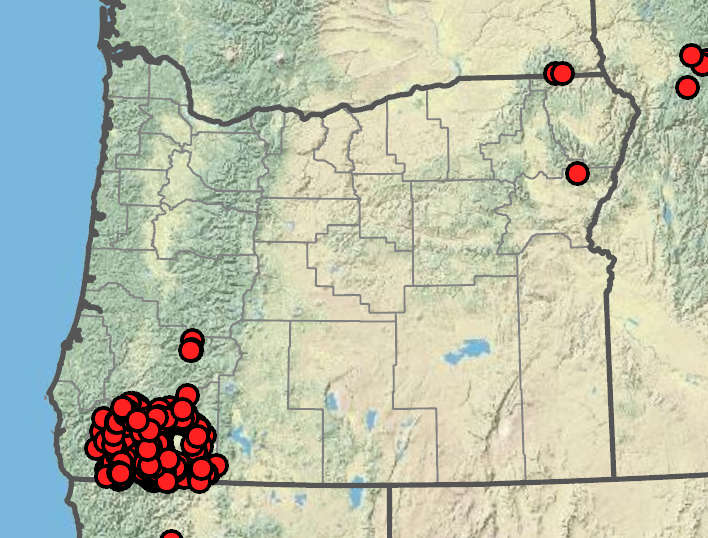Cypripedium californicum
Cypripedium fasciculatum
California lady slipper
clustered lady slipper
alternate, 5–10, 5–15 × 2–6 cm, grading into bracts in the inflorescence.
opposite, 2, 5– 11 × 4–7.5 cm.
elongated, 3–20-flowered.
compressed with 2–5-clustered flowers, nodding.
dorsal sepal elliptic, 1.5–2 × 1–1.5 cm; yellowish green to pale brownish yellow;
lateral sepals connate nearly to tip, similar in color and shape to dorsal sepal;
petals lanceolate, 1–2 × 0.3–0.5 cm, yellow to yellowish green;
lip 1.5–2 × 1–1.5 cm, white occasionally with pink.
dull yellow-green with purplish and/or brownish mottling throughout;
dorsal sepal lanceolate to ovate, 1.5–2 × 0.3–0.9 cm;
lateral sepals connate nearly to tip, similar in color and shape to dorsal sepal;
petals lanceolate to ovate, 1.5–2 × 0.6–1.5 cm;
lip 0.8–1.3 × 0.5–1 cm.
=20.
Cypripedium californicum
Cypripedium fasciculatum
Small streams, riversides, seepage slopes, usually on serpentine soils. Flowering Apr–Jul. 200–1600m. CR, Sisk. CA. Native.
Usually endemic to serpentine-derived soils, California lady slipper is often found growing with the carnivorous plant Darlingtonia californica in seepage slopes and small streams.
Mixed conifer forests. Flowering Apr–Jul. 50–1900m. BW, Casc, Sisk. CA, ID, WA; east to CO. Native.
The pedicel of this species elongates dramatically when in fruit, increasing the height of the plant from two to three times the flowering height.
James Riser
James Riser





